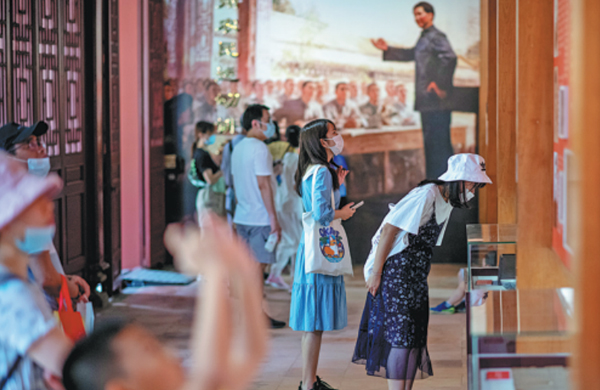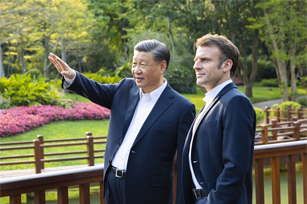Museum set to deepen understanding of history
Improvements are aimed at providing more space for artifacts related to the CPC's Third National Congress

Tourists visit the site of the Guangzhou Peasant Movement Institute in Guangzhou, Guangdong province, on May 1. CHINA DAILY
When it reopens to the public before the start of next month, the Museum of the Third National Congress of the Communist Party of China will be able to provide visitors with more information about the CPC's history and development.
Zhu Hairen, the museum's director, said the CPC's Third National Congress, which took place in Guangzhou, Guangdong province, from June 12 to 20, 1923, had great historical significance in the Party's developmental history.
The congress determined the CPC's anti-imperialist and anti-feudal principles and policies, and also established the United Front with the Kuomintang, which was then led by Sun Yat-sen.
Moreover, during the Congress the CPC decided to allow its members to join the KMT in a private capacity to help reorganize the party, Zhu said.
Meanwhile, the peasant movement led by Mao Zedong in his hometown in Hunan province was highly recognized and praised by the congress, said Zhu, who is also a senior researcher of the CPC history.
During the congress, Mao was elected as secretary of the CPC's five-person Central Bureau, indicating that he had entered the Party's power core, he added.
Chen Duxiu was elected as chairman, while the other members were Cai Hesen, Tan Pingshan and Luo Zhanglong.
Three years later, China witnessed a great revolution as the CPC and the KMT jointly started the "Northern Expedition", a military campaign to topple the warlord-led incumbent Beiyang government (1912-28).
In 1926, Mao became director of the Guangzhou Peasant Movement Institute to train leaders for such activities. Two years earlier, the KMT founded the Whampoa Military Academy in Guangzhou after its own national congress.
In addition to Chen and Mao, early Party leaders who attended the congress included Li Dazhao, Zhang Tailei, Xiang Ying, Qu Qiubai and Xiang Jingyu, the only female representative, plus Hendricus Sneevliet, a representative of the Communist International.
'City of heroes'
It was the only CPC national congress to be held in Guangzhou, which is known as "the city of heroes" as a result. While 40 people attended the meeting, only the names of 38 of them are known, Zhu said.
The museum, in the provincial capital's Yuexiu district, will reopen to the public before July 1, when the CPC celebrates its 100th birthday, Zhu said.
The museum is undergoing expansion and upgrading work to meet the demand from the growing number of visitors.
The improvements are expected to allow more visitors from home and abroad to better understand the CPC's history and development, he said.
"After the expansion, the museum, a patriotic education base, will have an exhibition floor space of about 1,500 square meters, double the previous area, and is expected to cope with more than 700,000 visitors a year," Zhu said.
In 2019, the museum, which was built in 2006, saw about 520,000 visitors. Expansion of the facility, which is listed as an important heritage site under State protection, began in July last year.
Li Shuying, the museum's deputy director, said the number of items on display will rise in the wake of the expansion, with more precious and valuable photos, relics and artifacts to help visitors better understand the CPC's history and development.
Several months ago, the museum began searching at home and abroad for more relics related to the CPC's Third National Congress. The artifacts in question include photos, literature, archival material, registration certificates, representatives' cards and the minutes of the congress, Li said.



 Print
Print Mail
Mail

